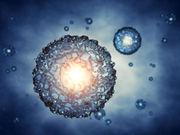Oocyte cryopreservation by vitrification provides highest yield, suitable when cancer tx can be delayed
THURSDAY, Oct. 26, 2017 (HealthDay News) — The demand for fertility preservation is increasing, and methods to address it include oocyte cryopreservation and ovarian-tissue cryopreservation, according to a review article published online Oct. 25 in the New England Journal of Medicine.
Jacques Donnez, M.D., Ph.D., and Marie-Madeleine Dolmans, M.D., Ph.D., from the Université Catholique de Louvain in Belgium, discussed methods for fertility preservation in women.
Indications for fertility preservation include malignant disease, particularly hematologic cancers and breast cancer; benign conditions including autoimmune and hematologic conditions as well as endometriosis and ovarian torsion; and age-related fertility decline. The researchers note that oocyte cryopreservation by vitrification provides the highest yield and is suitable for women with benign diseases, those seeking fertility preservation for personal reasons, and women with cancer if treatment can be delayed. Embryo cryopreservation requires a male partner or use of a donor sperm; cryopreservation of mature oocytes can circumvent some related ethical and legal concerns. For adolescents and women in whom cancer treatment cannot be postponed, ovarian-tissue cryopreservation is specifically indicated; however, this technique is still considered experimental.
“Improving freezing techniques, ensuring safe ovarian-tissue transportation (to provide and extend access to fertility preservation in large countries and low-resource areas), and minimizing the risks of fertility-preservation strategies in patients with cancer constitute formidable challenges for the coming decade,” the authors write.
One author disclosed ties to Gedeon Richter.
Copyright © 2017 HealthDay. All rights reserved.








